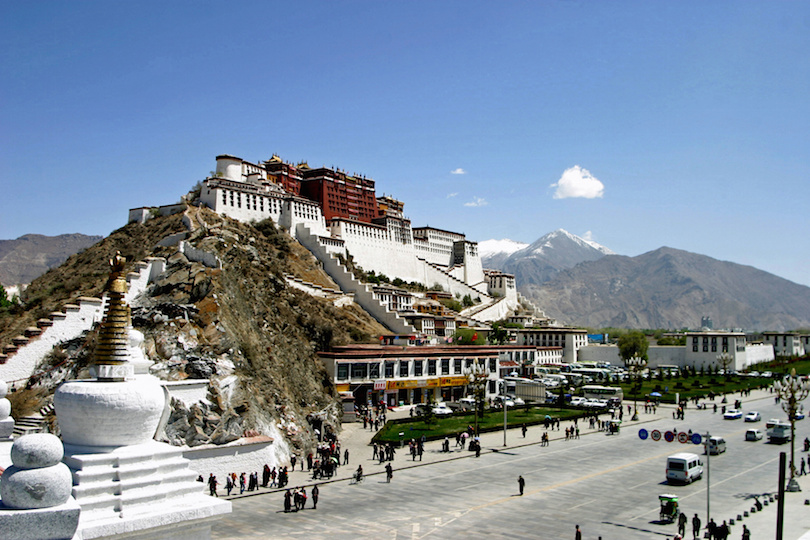
In approximately the 7th century, King Songtsen Gampo built a palace on the site where Potala now stands. The early fortress was created to be a home for the king’s two foreign wives. It wasn’t until the 17th century that the Dalai Lama begin construction of the large fortress and palace that is now visible. Construction allegedly took 50 years, which is no surprise when considering the scope of the palace and the incredible durability of the fortress walls, which still stand tall today.
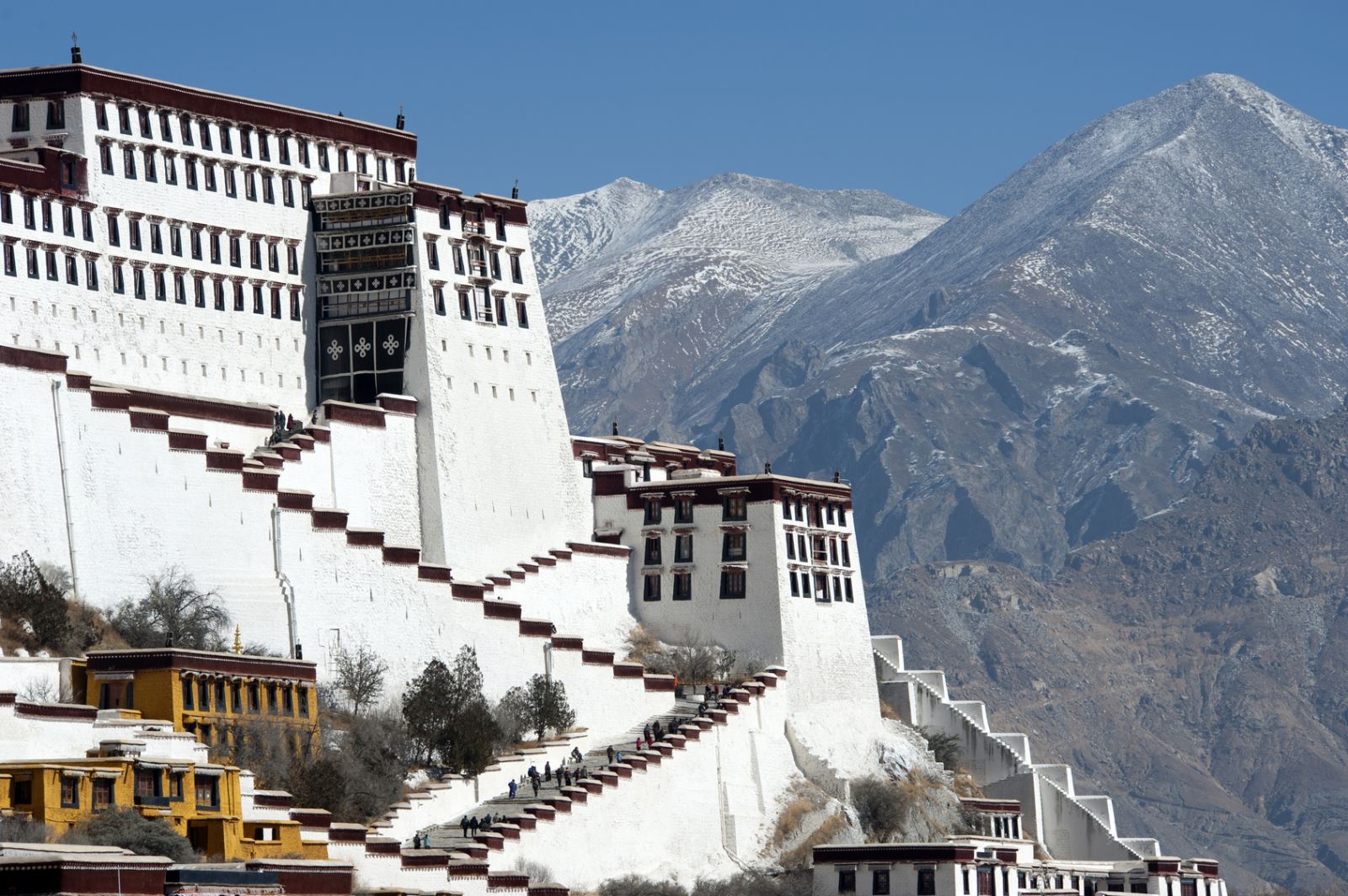
Initially, the Potala Palace was used as both a year-round and later a winter residence for the Dalai Lamas throughout history. The Potala Palace remained the residence of the Dalai Lama until the 14th Dalai Lama fled to India, after the Chinese invasion in 1959. Later, it was the hub for Tibetan government and administration, serving as a kind of capital for the autonomous region of China. Today, the Potala Palace is a museum.
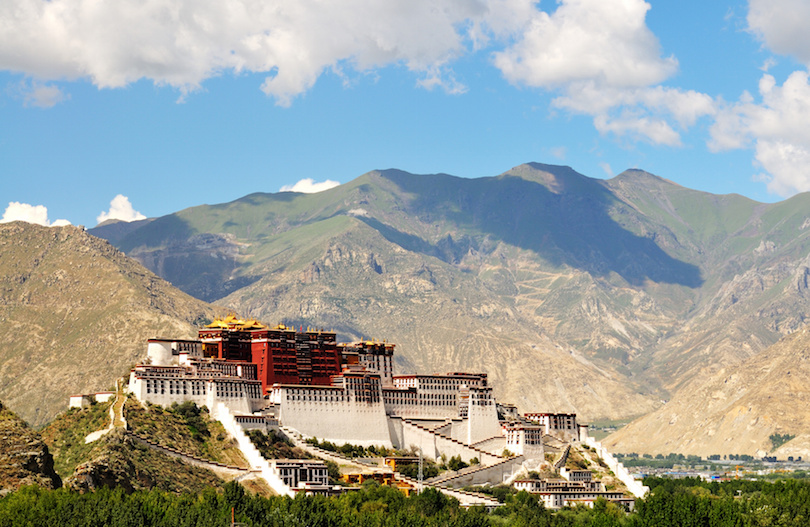
Potala Palace is sometimes referred to as the 2nd Putuo Mountain, because it is believed that divinities pass through, reside in the palace and bless those who visit. It is important to understand the role that mountains, and elevation, plays in Tibet and at Potala Palace. There are three major mountains that surround Lhasa, and together they are known as the Protectors of Tibet. Potala Palace’s high elevation makes it the highest palace in the world, but it also signifies the closeness to divinity. Visitors should be prepared for the elevation and try to acclimate before visiting the palace, because there can be a significant amount of walking and steps, which can be difficult at the high elevation of Potala.
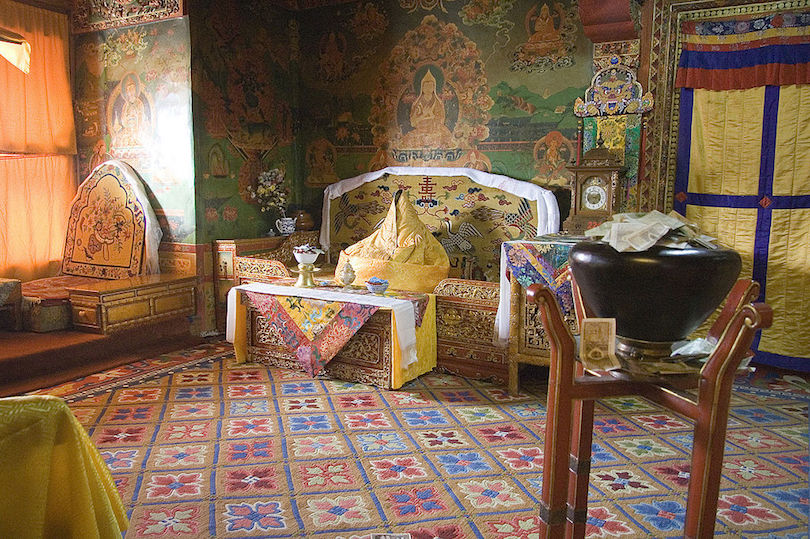
The size and scope of Potala Palace is symbolic, with the numbers 13 and 1,000 repeated often when it comes to floors, number of rooms and size of certain spaces. The palace should be thought of as two distinct spaces: The Red Palace and the White Palace.
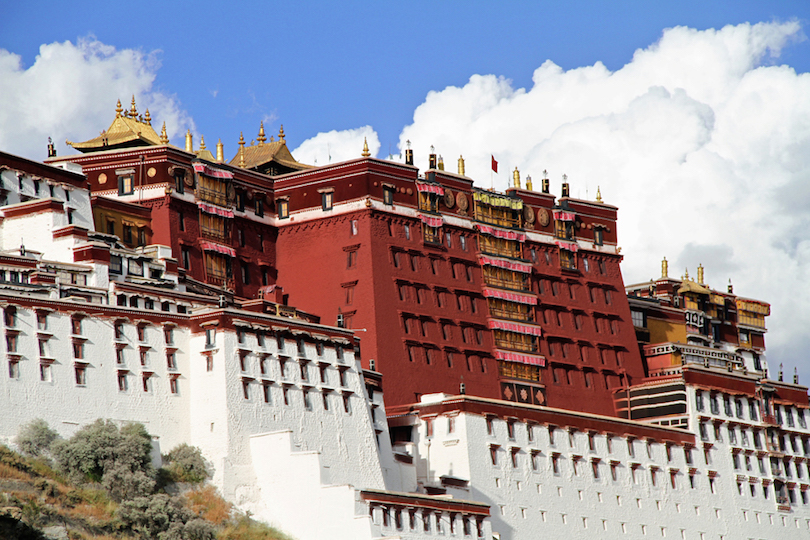
The Red Palace is the center of the fortress, and it is the tallest part of the palace as well as the religious section where prayer and studies take place. Inside the Red Palace, you’ll find the only remains of the original 7th century building, the Saint’s Chapel and the Dharma Cave.
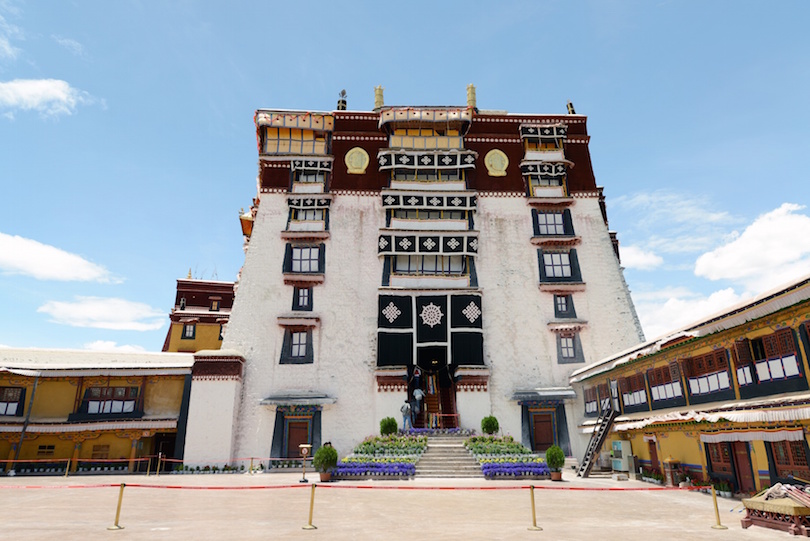
Although the Red Palace is thought to be more significant from a religious perspective, the White Palace is equally fascinating. The White Palace surrounds the Red Palace, creating two wings that are clearly visible on the sides of the fortress. It is here that you can find the living quarters of former Dalai Lamas as well as administrative rooms and additional residences. The palace contains 698 murals, almost 10,000 painted scrolls, numerous sculptures as well as a large collection of important historical documents.
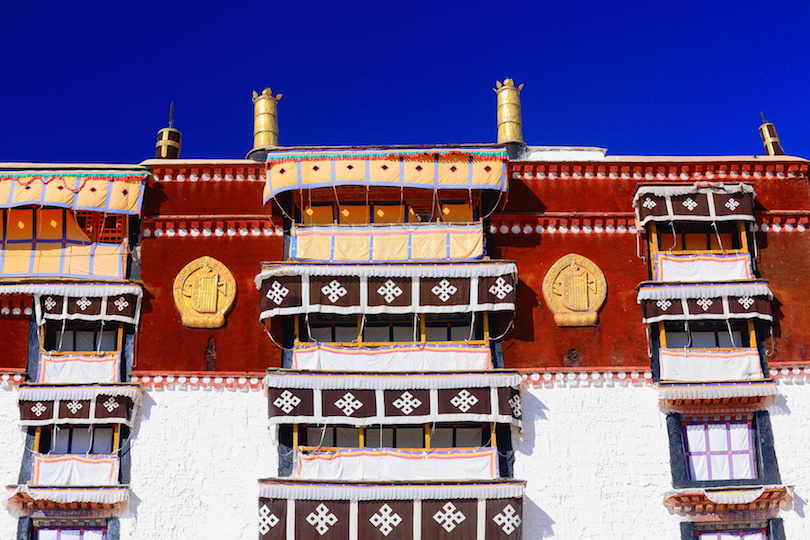
While the Dalai Lama doesn’t call Potala Palace his home currently, there are a number of Buddhist artifacts, and local treasures, still found on the premises. On display are gold, hand-written Buddhist scriptures dating back centuries, Chinese antiques and various gifts presented to Dalai Lamas by officials, Chinese emperors and religious figures alike. Sculptures depicting things like snow lions are also found guarding the palace entrances and exits, adding additional beauty to the already impressive architecture of the fortress.
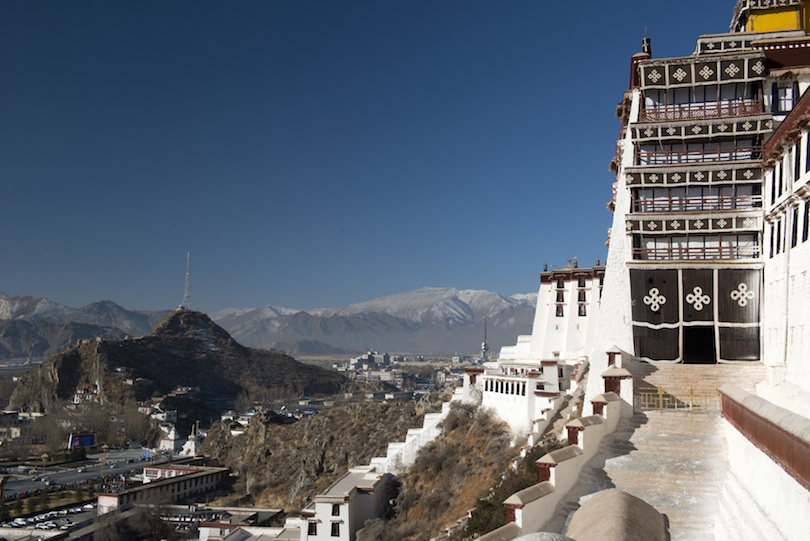
Visits to the Potala Palace have to be organized and planned at least a day in advance, and entrance tickets are limited to a certain number each day. Visitors will need to visit the site the day before their visit and pick up a voucher, which will determine the available time for the next day’s visit. You’ll have the option of a guided tour or a self-guided tour, but keep in mind that there are time limitations on how long can be spend in Potala Palace itself. Observe Buddhist customs and traditions by not wearing hats on the site and not taking any interior pictures, although photographs of the exterior of the palace are generally welcomed.
According to touropia











